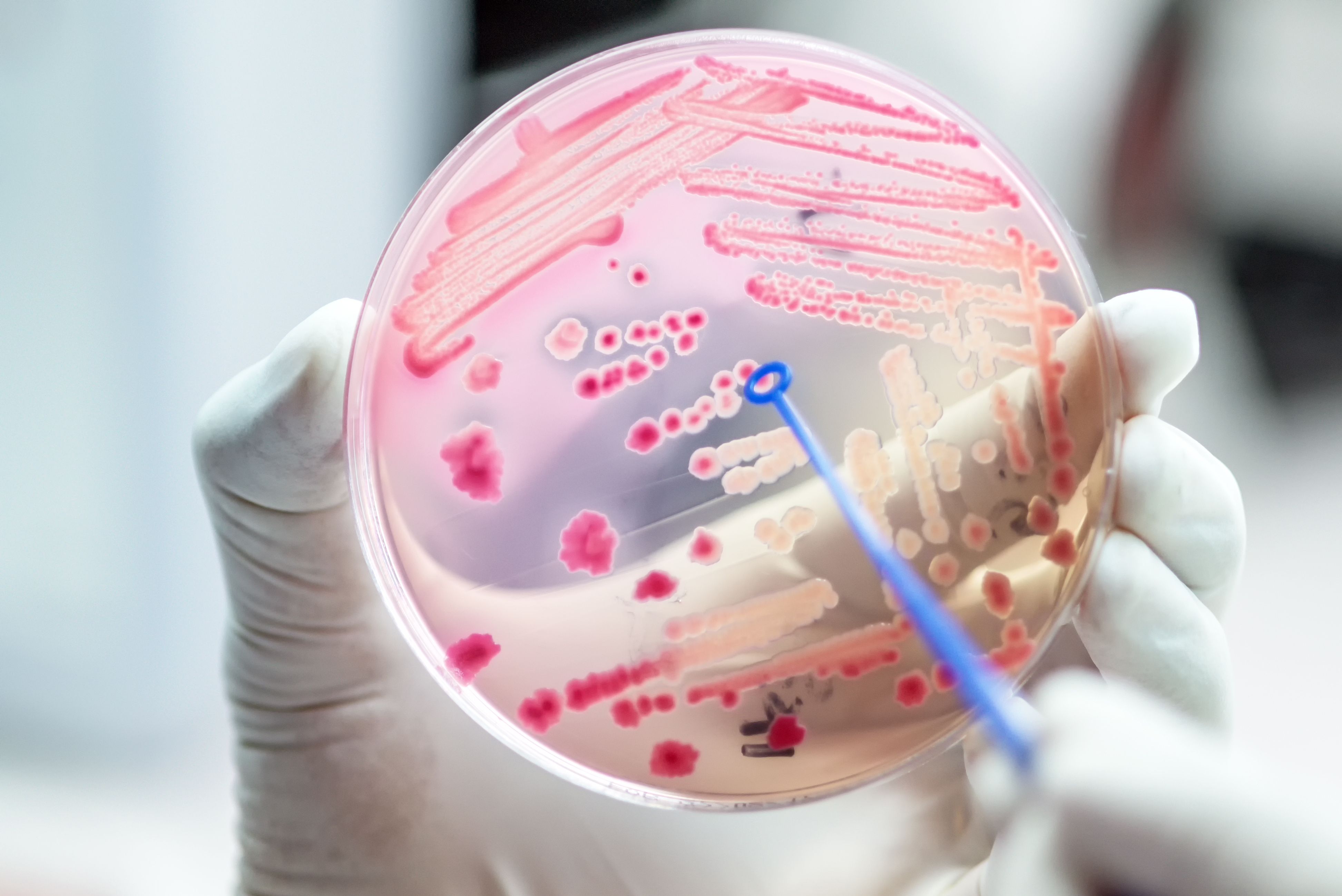Antibiotic-Resistant Bacteria Identified Using Infrared Spectroscopy and Machine Learning
Scientists from Ben-Gurion University of the Negev in Beer-Sheva, Israel, the Afeka Tel-Aviv Academic College of Engineering in Tel-Aviv, Israel, and the Shamoon College of Engineering in Beer-Sheva, Israel recently created a system that combines Fourier transform infrared (FT-IR) spectroscopy with machine learning algorithms to identify bacteria that is resistant to antibiotics. Their findings were published in Spectrochimica Acta Part A: Molecular and Biomolecular Spectroscopy (1).
Close up the media plate on hand medical technicians working on bacterial culture and drug resistance of pathogens in laboratory. © analysis121980 - stock.adobe.com

Urinary tract infections (UTIs) are infections that occur when bacteria enter the urethra and infect the urinary tract. UTIs are the second most common type of infection in the body, resulting in more than 8 million doctor’s visits each year; furthermore, approximately 10 in 25 women and 3 in 25men will have UTI symptoms during their lifetime (2). These infections can affect different parts of the urinary tract, with the most common type being bladder infections (cystitis) and more severe cases leading to kidney infection (pyelonephritis) (3). Of the different bacterium that can cause UTIs, one of the most common is Klebsiella (K.) pneumoniae. This pathogen can use different mechanisms to create antibiotic-resistant mutants, making them resistant to multiple significant antibiotics.
Research has shown that a leading factor that contributes to the emergence of drug-resistant K. pneumoniae isolates is the transfer of plasmids and transposons containing resistance genes. These isolates can acquire multi-resistant plasmids and transposons, which can potentially spread to other bacteria and hasten the spread of multidrug-resistant (MDR) strains. This phenomenon has led to a need for rapid and precise methods to identify and determine bacterial susceptibility to antibiotics. Some methods, such as the Vitek 2 system and disc diffusion tests, can accomplish this, but they often rely on overnight culture and need a minimum of 48 hours to identify bacterial species that cause infection.
Fourier transform infrared (FT-IR) spectroscopy is a method capable of detecting minor molecular changes in cells, encompassing changes linked to the development of antibiotic resistance. This approach has been used across multiple fields to identify various biological samples, including bacteria and cancer cells. For this study, the scientists combined FT-IR spectroscopy with machine learning algorithms to identify K. pneumoinae directly from urine samples of UTI patients; simultaneously, the system helped determine the samples’ susceptibility to commonly prescribed antibiotics, all within approximately 40 min.
For the experiment procedures, 2333 bacterial samples, 636 of which were K. pneumoniae, were investigated using infrared micro-spectroscopy. 27966 spectra were obtained and analyzed with an XGboost classifier, which achieved a success rate of over 85% for identifying K. pneumoniae samples. As for the simultaneous determination of K. pneumoniae susceptibility to antibiotics, the sensitivities ranged between 74% and 81%. These findings highlight the potential this system has in mitigating the risks of bacterial resistance, although more research must be conducted in this regard.
References
(1) Abu-Aqil, G.; Suleiman, M.; Lapidot, I. et al. Infrared Spectroscopy-Based Machine Learning Algorithms for Rapid Detection of Klebsiella pneumoniae Isolated Directly from Patients' Urine and Determining its Susceptibility to Antibiotics. Spectrochim. Acta Part A: Mol. Biomol. Spectrosc. 2024, 314, 124141. DOI: https://doi.org/10.1016/j.saa.2024.124141
(2) Understanding UTIs Across the Lifespan. Urology Care Foundation 2016. https://www.urologyhealth.org/healthy-living/urologyhealth-extra/magazine-archives/summer-2016/understanding-utis-across-the-lifespan (accessed 2024-3-27)
(3) Urinary Tract Infection. U.S. Department of Health & Human Services 2024. https://www.cdc.gov/antibiotic-use/uti.html (accessed 2024-3-27)
Smarter Sensors, Cleaner Earth Using AI and IoT for Pollution Monitoring
April 22nd 2025A global research team has detailed how smart sensors, artificial intelligence (AI), machine learning, and Internet of Things (IoT) technologies are transforming the detection and management of environmental pollutants. Their comprehensive review highlights how spectroscopy and sensor networks are now key tools in real-time pollution tracking.
AI Shakes Up Spectroscopy as New Tools Reveal the Secret Life of Molecules
April 14th 2025A leading-edge review led by researchers at Oak Ridge National Laboratory and MIT explores how artificial intelligence is revolutionizing the study of molecular vibrations and phonon dynamics. From infrared and Raman spectroscopy to neutron and X-ray scattering, AI is transforming how scientists interpret vibrational spectra and predict material behaviors.